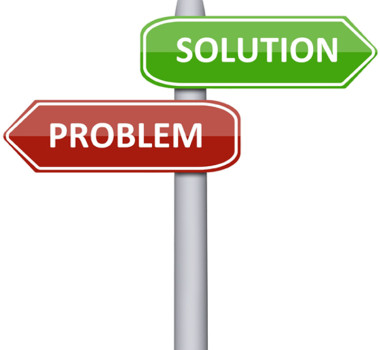
January 28, 2016
Problem identification is the first step to solve any problem. C-store managers use reports, experience, business intelligence (BI) and consultants. Nonetheless, there are 3 Steps to solve c-store performance problems that are often overlooked. Once a problem is defined, the question then becomes, how do we resolve it. This will vary on the type of problem of course but, there is a second process taken in C-Stores to resolve their problems. Issue identification is only the first. Without these other steps there is no point in finding the problem.
LOCATE THE ROOT CAUSE
Once a problem is identified, it is time to investigate what caused it. In a C-Store company, declining sales could be caused by not ordering enough inventory, market demand could be shrinking, or a competitor could be running a promotion on an entire category, etc. Analyzing why a problem is happening can be complex. You need to know what could cause the problem and then investigate those areas. If you do not have an analyst on your staff, this is where Business Intelligence tools come in. They give you quicker access and reporting on what is happening to identify where the core root of the issue may lie.
ADDRESS THE CAUSE
Simply identifying the problem is not enough. Once you know what is causing the issue, it needs to be fixed. This also can be cumbersome. A lot of different things can create a problem. For example:
- Excessive inventory ordered by the store manager.
- Shrinking sales of a product. It could be product selection or competition’s pricing. management team.
Making the responsible party aware of the problem will be key. A manager can show them the reports, and have a meeting with them to discuss resolution tactics but ultimately, they will be the ones taking action to solve the problem. It will require heavy analysis or tools to help them find the core root of it.
MONITOR FOR IMPROVMENT
Herein lies the irony in C-Store problem solving. The responsible staff that must solve the problems. Managers need to make the staff fix their mistakes.. However, in the end, managers are ultimately the ones responsible for resolving issues as they arise. Managers must track and monitor the progress to be certain the issue is resolved. This includes the problem and all things that could cause it. Further, they must identify underlying issues so the problems do not repeat. Of course, Fixing the underlying issues resolve the problem for the long term. In fact, the long term fix demands a review of the true cause. The root cause needs to be addressed. Without data analytics, many problems can create a lot of waste effort. So many retail issues are related to sales, shrink or high volume work, it can be hard to assess the problem. Thus, POS scan data tools can simplify the job of understanding behaviours.
When it comes to problem solving, most business intelligence tools only take you part way there. When seeking a business intelligence solution, you need to find one that will go beyond identifying the core root and look for one that will take action with the information that it finds. These 3 steps solve c-store performance problems:
- Communicate with KPI’s to those responsible to manage results.
- Track the progress of problems that need to be fix. Set deadlines and update the status.
- Establish expected results for post-fix and follow up. Failed goals may demand repeat problem review.